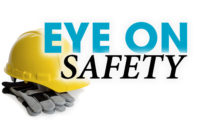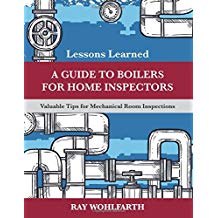Eye on Safety | Justin Sassen
The important relationship between safety and maintenance

Image Source: kupicoo / E+ via Getty Images
In the dynamic realm of the PHCP/PVF industry, where machinery and equipment form the core of operations, ensuring the safety of employees and the facility is of utmost importance. When incidents occur, a thorough examination of safety protocols, maintenance practices, and their interconnectedness is essential.
As a committed safety professional, my focus is not on assigning blame but on understanding the inherent relationship between safety and maintenance as integral components of a seamless operation.
Navigating the interdependence of safety and maintenance
When scrutinizing safety incidents, it becomes evident that there is a direct correlation between reactive maintenance and adverse events. However, what often escapes attention is the positive link between the absence of safety incidents and regular, scheduled preventative maintenance.
Both safety and maintenance share a common goal: preserving the well-being of employees and safeguarding the facility. Although safety emphasizes individuals, and maintenance typically concentrates on the facility and its equipment, recognizing their interdependence is crucial for the overall health of the organization.
Maintenance, like safety, is a form of hazard mitigation and control. Both functions require qualified individuals to execute specific procedures directly impacting the health and safety of all employees. Instead of viewing them as separate entities, it is imperative to acknowledge their codependency.
Routine and planned preventative maintenance, executed on a predetermined schedule, are proactive measures designed to prevent downtime, costly repairs, hazards, and injuries. Investing in planned maintenance proves to be less risky and financially prudent compared to the repercussions of unforeseen equipment failure.
Effectively managing planned maintenance
Effective communication is pivotal in the relationship between safety and maintenance. Employees must be informed about all preventive maintenance activities, especially if they impact their immediate working areas. This not only underscores the significance of preventative maintenance but also educates employees on the necessity of protective equipment and safe working procedures during maintenance processes.
Treating safety and maintenance as equal partners in this integrated approach not only lowers incident rates but also fosters an environment where overall safety thrives.
Post-maintenance, employees gain heightened awareness, allowing them to identify potential hazards like missing guards, incorrect settings, or electrical shock risks before resuming regular work functions.
Despite the seemingly paradoxical notion of planned unscheduled maintenance, its inclusion in preventive maintenance planning is crucial. Certain equipment demands attention based on daily use or accumulated operating hours. Failing to monitor equipment hours can lead to malfunctions, resulting in outcomes ranging from fires to injuries. Vigilant planning and scheduling are indispensable in averting such safety hazards.
Addressing challenges responsively
Corrective/reactive maintenance is the responsive counterpart, triggered by unexpected failures. The drawback of unplanned maintenance lies in its substantial costs, not only for repairs but also in potential extended downtime, impacting production and employee safety. Empowering employees to promptly report malfunctioning equipment is a proactive measure that integrates maintenance into the broader safety framework.
To fortify this aspect of the safety-maintenance nexus, it is crucial to instill a proactive culture among employees. Encouraging them to promptly report any signs of malfunctioning equipment establishes a vital feedback loop. This not only ensures a swift response to potential hazards but also integrates maintenance seamlessly into the broader safety framework. By empowering individuals on the frontline to be vigilant observers and active participants in safety, we create a resilient environment that not only addresses challenges as they arise but also actively prevents their occurrence.
Conclusion
To establish a robust relationship between maintenance and safety, a comprehensive plan must be developed and communicated. Treating safety and maintenance as equal partners in this integrated approach not only lowers incident rates but also fosters an environment where overall safety thrives. As professionals in the PHCP/PVF industry, embracing this holistic approach ensures that our facilities operate smoothly, our employees thrive in secure environments, and our businesses flourish sustainably.
Looking for a reprint of this article?
From high-res PDFs to custom plaques, order your copy today!







